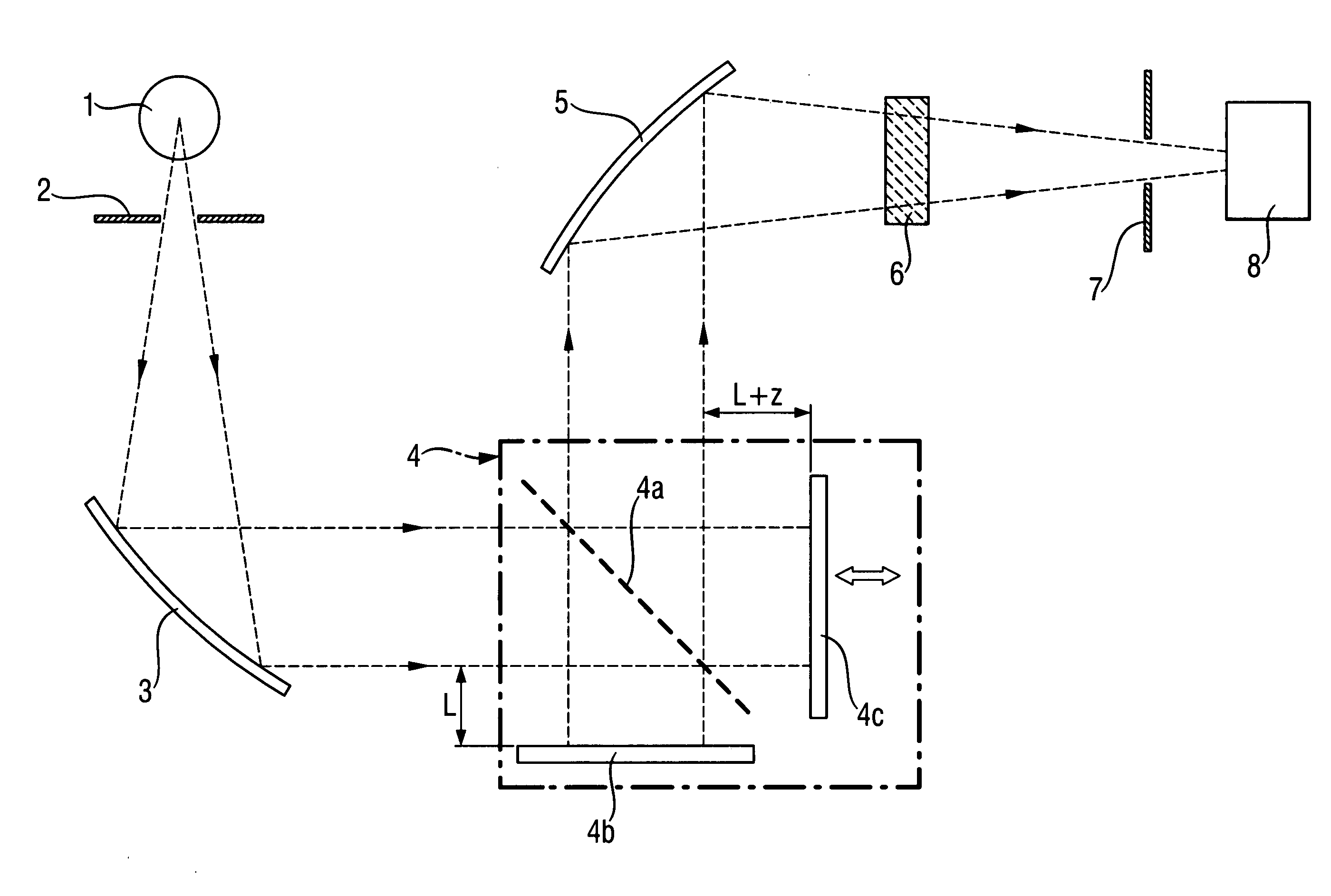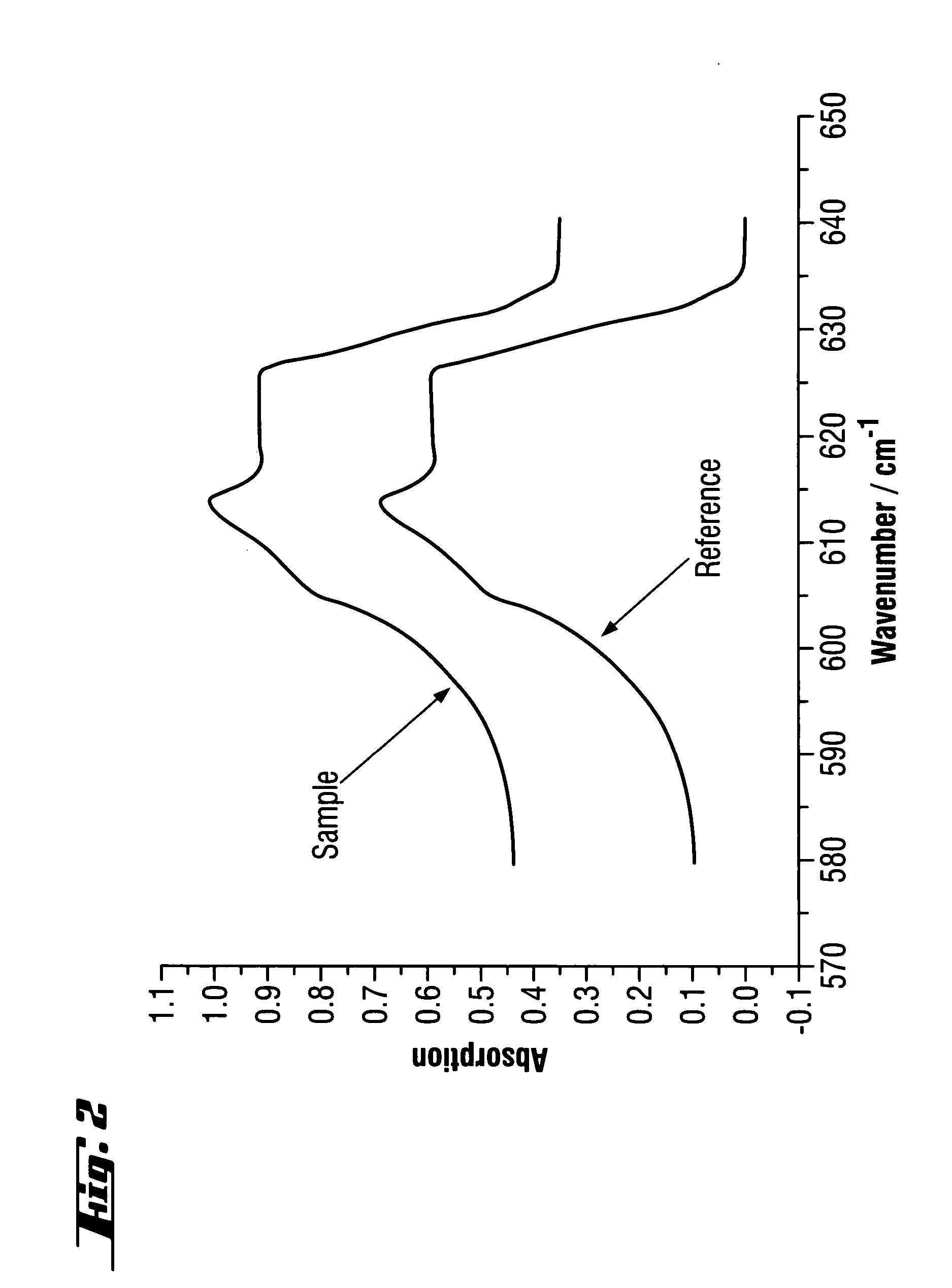Method for determining the substitutional carbon content in monocrystalline or polycrystalline silicon
a technology of substitutional carbon content and which is applied in the field of determining the substitutional carbon content of monocrystalline or polycrystalline silicon, can solve the problems of not offering a significant improvement, limited opportunities for further lowering the detection threshold of the ft-ir method, and relatively large perturbations, so as to achieve the effect of reducing the perturbation in the differential spectrum
- Summary
- Abstract
- Description
- Claims
- Application Information
AI Technical Summary
Benefits of technology
Problems solved by technology
Method used
Image
Examples
Embodiment Construction
[0023] The method according to the invention will be described by way of example below, the individual steps according to the invention being illustrated with the aid of spectral representations in FIG. 2 to FIG. 7. Here, the spectral range between 580 cm−1 and 640 cm−1 is used as the relevant measurement range. The following values are assumed for the other wavenumbers a, b and x: x=640 cm−1, a=620 cm−1 and b=595 cm−1.
[0024] Absorption spectra (FIG. 2) of a silicon sample and a silicon reference sample (referred to below as the sample and reference materials) are recorded using infrared spectroscopic measurement apparatus as shown in FIG. 1. Fourier transform infrared spectrometers (FT-IR spectrometers) are preferably used for producing these absorption spectra. Such an infrared optical system consists of an infrared light source (1), for example a globar, an aperture (2) and a collimator system (3) to make the emerging infrared radiation parallel when it enters a subsequent Miche...
PUM
| Property | Measurement | Unit |
|---|---|---|
| wavenumber | aaaaa | aaaaa |
| wavenumber | aaaaa | aaaaa |
| wavenumber | aaaaa | aaaaa |
Abstract
Description
Claims
Application Information
 Login to View More
Login to View More - R&D
- Intellectual Property
- Life Sciences
- Materials
- Tech Scout
- Unparalleled Data Quality
- Higher Quality Content
- 60% Fewer Hallucinations
Browse by: Latest US Patents, China's latest patents, Technical Efficacy Thesaurus, Application Domain, Technology Topic, Popular Technical Reports.
© 2025 PatSnap. All rights reserved.Legal|Privacy policy|Modern Slavery Act Transparency Statement|Sitemap|About US| Contact US: help@patsnap.com



